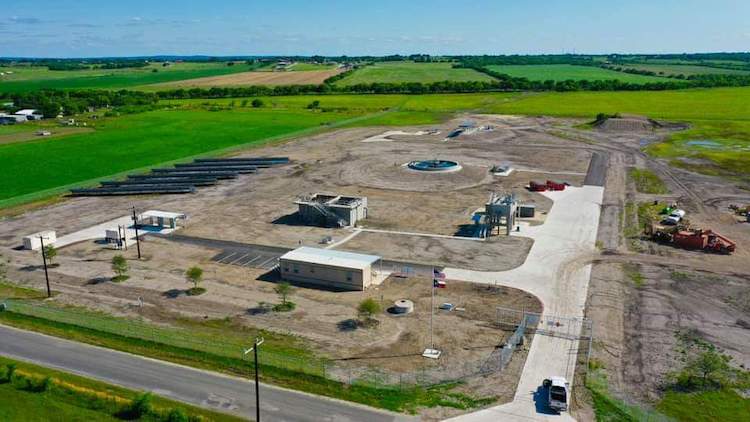Sustainability has become a word mentioned across our lives and the industry but isn’t as clearly defined as other terms like efficiency, safety factor, or effluent quality.
According to the United Nations Brundtland Commission Report of 1987, “Sustainable development is…development that meets the needs of the present without compromising the ability of future generations to meet their own needs.”
Its lack of specificity can make it difficult for engineers to improve their project’s sustainability; however, this freedom in exact definitions also provides the opportunity to apply sustainability in every decision and stage of design, construction, and operation of an engineered project.
One way to transform the topic of sustainability from a buzzword into practical and quantifiable plans is through the Institute for Sustainable Infrastructure’s (ISI’s) Envision program. Envision provides guidelines on sustainable design on multiple facets of a project, including a project’s social and environmental effects on the community, the owner’s operation and maintenance (O&M), and the overall life cycle costs and impacts. These guidelines are summarized within an ISI-provided guide called the Envision Guidance Manual, which gives a framework for engineers to apply the sustainable principles and measure their improvements.
Envision provides guiding principles on 64 sustainability and resilience factors called “credits” that are organized around five categories: quality of life, leadership, resource allocation, natural world, and climate and resilience.
Through the leadership of staff and strategies described in the Envision Guidance Manual, the San Antonio River Authority and Freese and Nichols recently celebrated the grand opening of the Martinez IV Wastewater Treatment Plant, a design-build project for a new 250,000 gpd master-planned water resource recovery facility (WRRF) with an ultimate capacity of 2 mgd. The project received an Envision Silver Award for its sustainable design, making it the first ISI-awarded wastewater treatment plant in Texas.
The notable sustainable features of the facility include the use of renewable energy solar panels to offset energy usage for the operation of the facility, installation of low-impact development (LID) features of vegetated filter strips and swales to improve stormwater runoff quality, and unique construction methods to reuse cut materials and native soils on the site.
Here are Some Lessons Learned
Better understand Envision and what it entails. The Envision Guidance Manual is a readily available resource to identify methods to capitalize your design with sustainable components. The manual can also provide a resource to find inspiration for new methods and sustainable practices to implement during design, construction, and operation. Other methods to educate oneself in sustainable project delivery include attending or hosting an Envision seminar to learn more about the program,and becoming certified as an Envision sustainability professional (ENV SP) by receiving the required training and completing the online test.
Have the right people in the room. Setting up the project as a design-build project delivery allowed collaboration between key team members including engineer, contractor, and the owner’s engineers and operators during the early stages of the project. Outside stakeholders should also be included in the design workshops to the extent reasonable. The ability to have direct conversations with all team members regarding topics such as design, project cost, construction methods, site access, community impacts, construction materials, and sequencing was key to deciding which sustainable options were realistic and practical.
Look beyond the here and now. The facility was also designed as a master-planned project, which incorporated multiple features in its design for easier and more economical future improvements and expansions as the surrounding community continues to grow and develop. With the mindset of looking past the current needs, identifying opportunities in future expansion can provide a more robust design that can extend a project’s useful life, reduce waste and environmental impacts, lower the impact on the surrounding community, and provide cost-saving opportunities for the owner.
Have clear communication. The project team developed communication tools to make it easier to track and document sought-after Envision credits. A spreadsheet was created with tabs for each credit, describing required documentation and the pursued level of achievement. Though the sustainable design, construction, and long-term operation is the main goal of the project team, to receive the certified rating the project team must produce the documentation required. Most of the documentation is not uniquely created for the Envision program, as a number of documents were either created during the design process, such as design drawings and specifications, or were already needed for the operation and maintenance of the facility, such as an O&M manual. The majority of additional effort is in the compiling and formatting needs for ease of ISI review. As with any submittal, if the criteria identified in the Envision Guidance Manual is clearly demonstrated and easy to find, the review process will go much smoother. Additionally, consistent coordination meetings with team members provided the opportunity to easily track and obtain documents that were created by various team members.
Set realistic goals. Don’t set your sights on a platinum rating if it’s not realistic. Early workshops can provide opportunities to evaluate the utility’s priorities, identify important components, and then allow for a preliminary evaluation of the potential credits and rating. Build contingencies in case the reviewer disagrees with your justification. For example, if you have a goal of silver, which takes 30% of applicable credits, aim for 35%.
Don’t be discouraged. The process may seem daunting at first as it is likely new territory for your project team. However, with these tips you will have the knowledge, organization, and tools to improve the sustainability of your projects in both specific and measurable ways.

